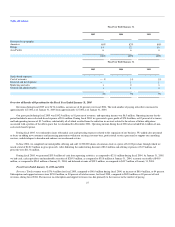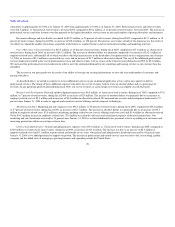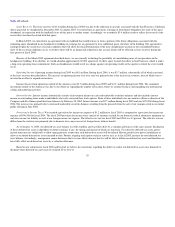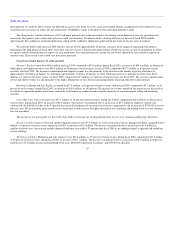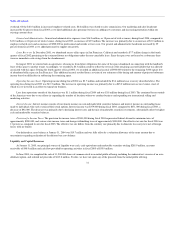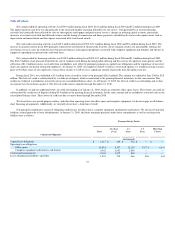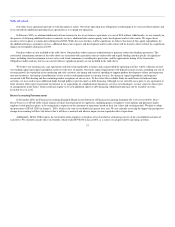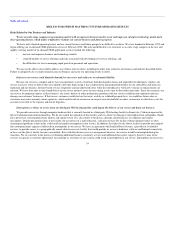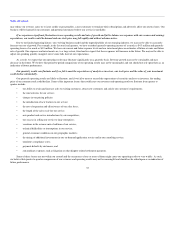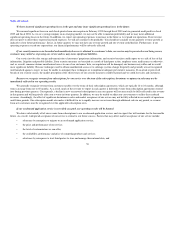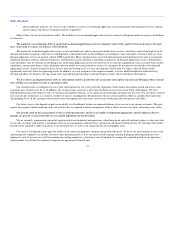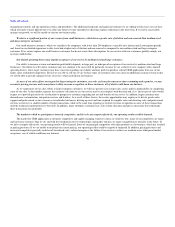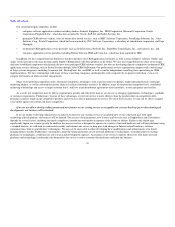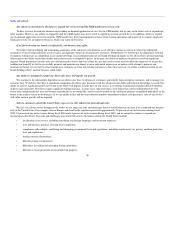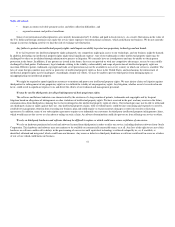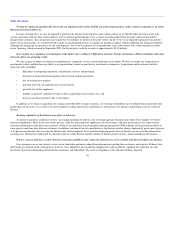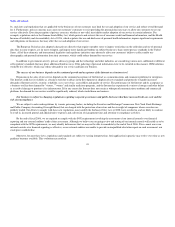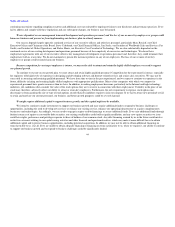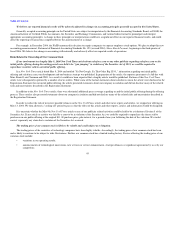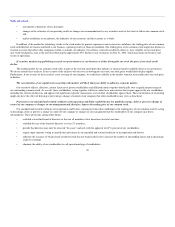Salesforce.com 2004 Annual Report Download - page 40
Download and view the complete annual report
Please find page 40 of the 2004 Salesforce.com annual report below. You can navigate through the pages in the report by either clicking on the pages listed below, or by using the keyword search tool below to find specific information within the annual report.
Table of Contents
We have incurred significant operating losses in the past and may incur significant operating losses in the future.
We incurred significant losses in each fiscal quarter from our inception in February 1999 through fiscal 2003 and we generated small profits in fiscal
2005 and fiscal 2004. As we are a young company in an emerging market, we may not be able to maintain profitability and we may incur additional
significant operating losses in the future. In addition, we expect our operating expenses to increase in the future as we expand our operations. If our revenue
does not grow to offset these expected increased expenses, we will not continue to be profitable. You should not consider recent quarterly revenue growth as
indicative of our future performance. In fact, in future quarters we may not have any revenue growth and our revenue could decline. Furthermore, if our
operating expenses exceed our expectations, our financial performance will be adversely affected.
If our security measures are breached and unauthorized access is obtained to a customer's data, our service may be perceived as not being secure,
customers may curtail or stop using our service and we may incur significant liabilities.
Our service involves the storage and transmission of customers' proprietary information, and security breaches could expose us to a risk of loss of this
information, litigation and possible liability. If our security measures are breached as a result of third-party action, employee error, malfeasance or otherwise,
and, as a result, someone obtains unauthorized access to one of our customers' data, our reputation will be damaged, our business may suffer and we could
incur significant liability. Because techniques used to obtain unauthorized access or to sabotage systems change frequently and generally are not recognized
until launched against a target, we may be unable to anticipate these techniques or to implement adequate preventative measures. If an actual or perceived
breach of our security occurs, the market perception of the effectiveness of our security measures could be harmed and we could lose sales and customers.
Because we recognize revenue from subscriptions for our service over the term of the subscription, downturns or upturns in sales may not be
immediately reflected in our operating results.
We generally recognize revenue from customers ratably over the terms of their subscription agreements, which are typically 12 to 24 months, although
terms can range from one to 60 months. As a result, much of the revenue we report in each quarter is deferred revenue from subscription agreements entered
into during previous quarters. Consequently, a decline in new or renewed subscriptions in any one quarter will not necessarily be fully reflected in the revenue
in that quarter and will negatively affect our revenue in future quarters. In addition, we may be unable to adjust our cost structure to reflect these reduced
revenues. Accordingly, the effect of significant downturns in sales and market acceptance of our service may not be fully reflected in our results of operations
until future periods. Our subscription model also makes it difficult for us to rapidly increase our revenue through additional sales in any period, as revenue
from new customers must be recognized over the applicable subscription term.
If our on-demand application service is not widely accepted, our operating results will be harmed.
We derive substantially all of our revenue from subscriptions to our on-demand application service, and we expect this will continue for the foreseeable
future. As a result, widespread acceptance of our service is critical to our future success. Factors that may affect market acceptance of our service include:
• reluctance by enterprises to migrate to an on-demand application service;
• the price and performance of our service;
• the level of customization we can offer;
• the availability, performance and price of competing products and services;
• reluctance by enterprises to trust third parties to store and manage their internal data; and
36



